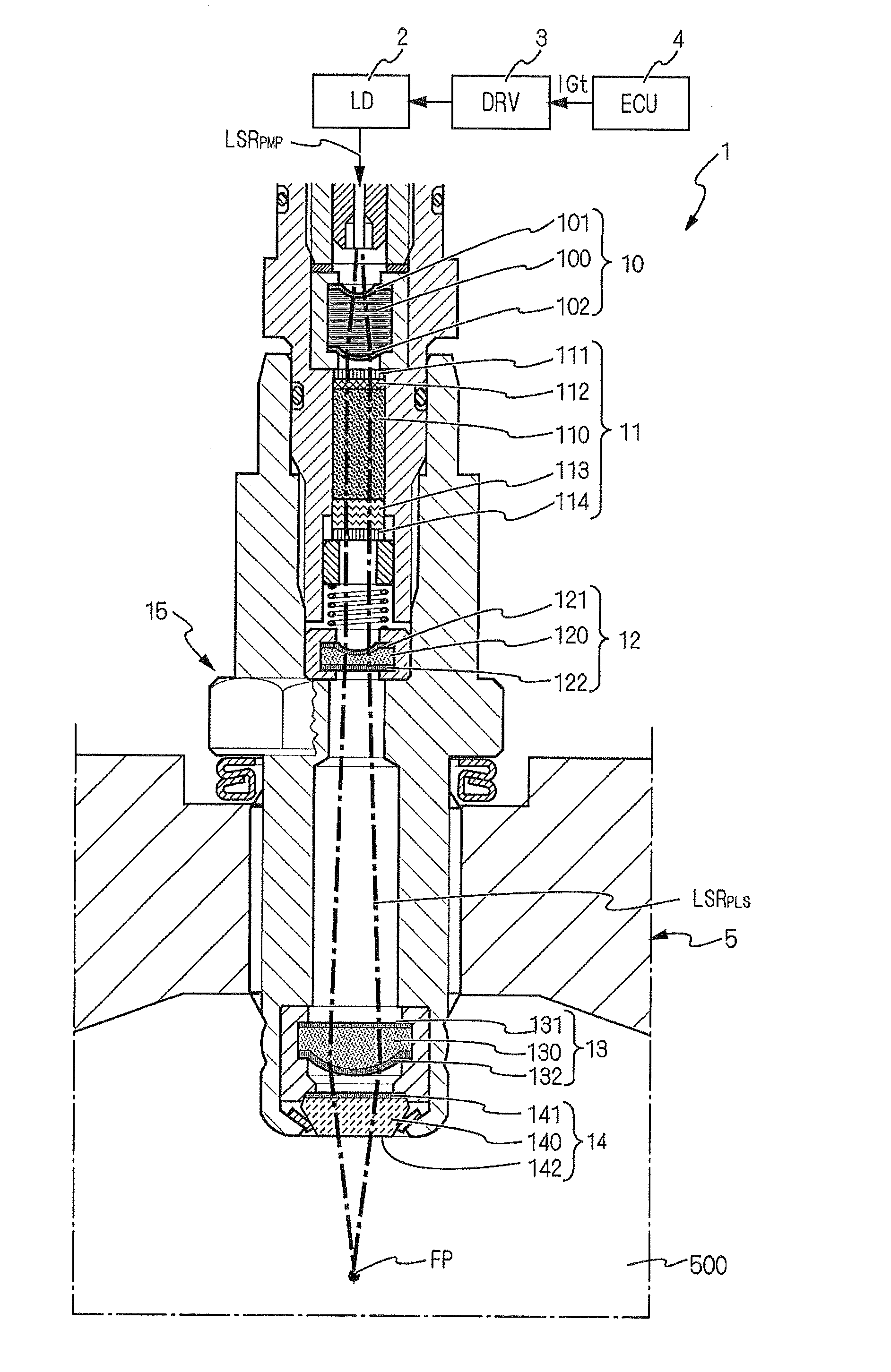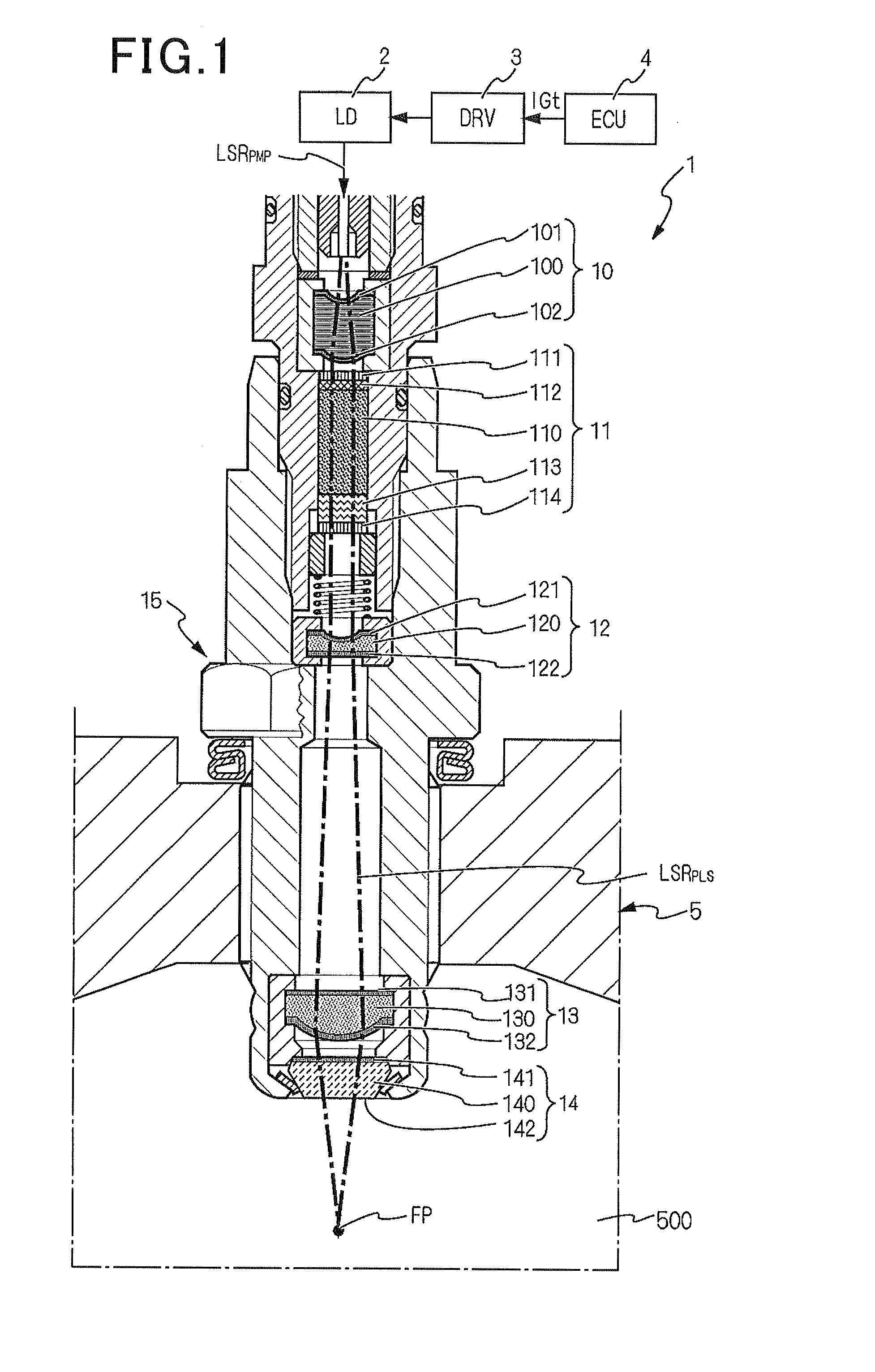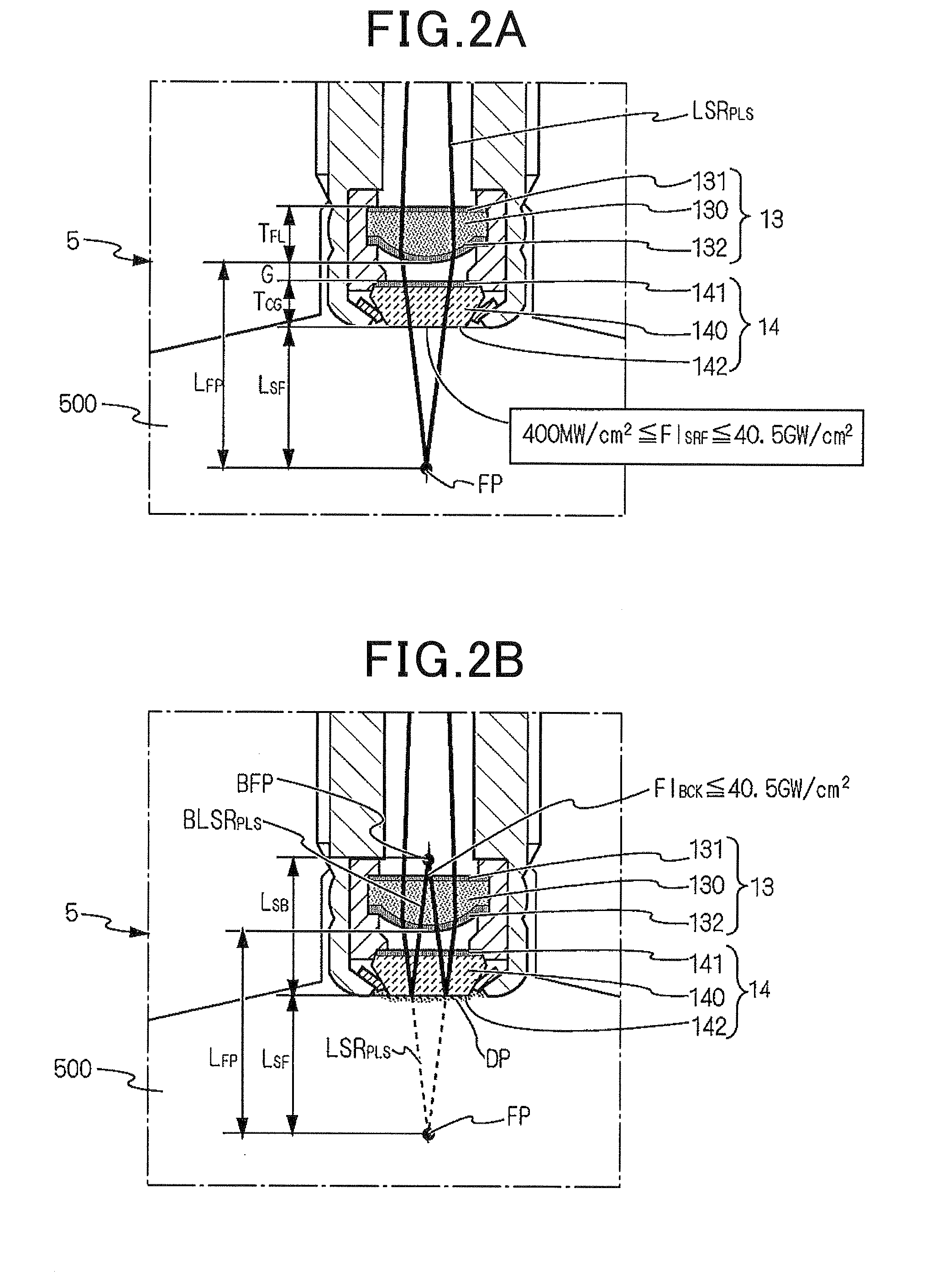Laser ignition apparatus
a laser ignition and apparatus technology, applied in the direction of spark plugs, basic electric elements, combustion engines, etc., can solve the problems of lowering the power density of laser light at the focal point of the combustion chamber, damage to the focusing lens or the protective cover, and the ar (anti-reflective) coating formed on the surface of the focusing lens to be peeled off, so as to achieve high reliability of the laser ignition apparatus
- Summary
- Abstract
- Description
- Claims
- Application Information
AI Technical Summary
Benefits of technology
Problems solved by technology
Method used
Image
Examples
Embodiment Construction
[0042]FIG. 1 shows the overall configuration of a laser ignition apparatus 1 according to an embodiment.
[0043]The laser ignition apparatus 1 is designed to ignite the air-fuel mixture in a combustion chamber 500 of an internal combustion engine 5. More particularly, the laser ignition apparatus 1 is designed to have a high capability of igniting the air-fuel mixture even when the engine 5 is a highly-charged engine, a high-compression engine or a natural gas engine that has a large bore diameter of cylinders.
[0044]As shown in FIG. 1, the laser ignition apparatus 1 is configured with an Engine Control Unit (ECU) 4, a drive unit (abbreviated to DRV in FIG. 1) 3, an excitation light source (abbreviated to LD in FIG. 1) 2, a regulating optical element 10, a laser resonator (or optical resonator) 11, an enlarging optical element 12, a focusing optical element 13, an optical window member 14 and a housing 15.
[0045]The ECU 4 is configured to output an ignition signal IGt to the drive unit ...
PUM
 Login to View More
Login to View More Abstract
Description
Claims
Application Information
 Login to View More
Login to View More - R&D
- Intellectual Property
- Life Sciences
- Materials
- Tech Scout
- Unparalleled Data Quality
- Higher Quality Content
- 60% Fewer Hallucinations
Browse by: Latest US Patents, China's latest patents, Technical Efficacy Thesaurus, Application Domain, Technology Topic, Popular Technical Reports.
© 2025 PatSnap. All rights reserved.Legal|Privacy policy|Modern Slavery Act Transparency Statement|Sitemap|About US| Contact US: help@patsnap.com



